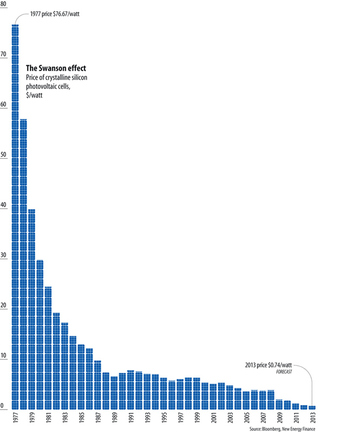5 REASONS TO SUPPORT SOLAR IN RHODE ISLAND
I have read many articles and studies that show how solar is good for the economy, the environment and homeowners. This article does a great job in putting together five compelling ways to look at the benefits of solar, and how continuing with the status quo of burning fossil fuels is detrimental to all of us, whether you are one of the millions of Americans suffering from asthma or not.
5 Reasons Solar Is Already Beating Fossil Fuels-
It’s frustrating to still hear dissenters say that renewable energy is not ready to compete with fossil fuels as a means to power our country. The solar industry is growing dramatically every year, while fossil fuels continue to be phased out. Solar is no longer the cottage industry it was decades ago. Stunning advancements in production and financing have brought solar to the playing field with coal, oil, natural gas, and nuclear. And here are five reasons why solar is already winning.
1. Jobs

In 2012, solar added 14,000 new jobs, up 36 percent from 2010 and the industry will add another 20,000 jobs this year. The fossil fuels industry cut 4,000 jobs last year. During their recent solar boom, Germany doubled their solar workforce to over 400,000. The most important point is that renewables are more job-dense than fossil fuels, so even at the same price, solar will employ more people than fossil fuels. When it comes to employing Americans, solar is winning.
2. Price

I’m sure you’ve heard the argument that solar is economically effective only by relying on government subsidies. Currently this may be true, but if solar prices reach Citigroup’s prediction of $.25/ watt by 2020, subsidies may not even be needed.
And then there’s the glaring fact that oil, gas and coal receive subsidies that dwarf those for renewables ($409 billion v. $60 billion globally).
And that’s ignoring the extra costs that burning fossil fuels impose on the rest of society, that aren’t paid by fossil fuel companies (called “externalities” by economists). The Harvard Medical School estimates that burning coal in the U.S. costs $500 billion in environmental and health damage. If those costs were taxed back onto coal plants, the price of coal would more than double.
And that’s not even considering the whole climate change thing.
(Image Courtesy CleanTechnica)
3. Capacity

Earlier this year, the U.S. became the fourth country to have 10 GW of solar energy capacity, with installations increasing at a rate of 50 percent annually for the last five years. That rate is expected to increase to 80 percent this year.
⅔ of global solar capacity has been installed over the last two years. In contrast, 175 coal fired power plants in the U.S. are expected to be shut down over the next five years (over 10 percent of total capacity). This reflects the rising costs of coal and the implementation of stricter environmental regulations.
(Photo courtesy GTM Research)
4. Investment

Recently a number of reports have shed light on an impending “carbon bubble”. Fossil fuel companies are valued in the market based on their reserves of unburned fuel still in the ground. If international regulations are put in place to prevent atmospheric CO2 from rising above 450 ppm (the estimated cap to avoid irreversible climate change), much of the listed reserves couldn’t be burned for fuel.
This means that many fossil fuel companies are overvalued as they potentially have huge unburnable reserves of fuel. British bank HSBC estimates that once stricter climate regulations are put in place, the value of fossil fuel companies may fall drastically. Already, the market cap of coal companies has dropped in value 75 percent over the last 5 years.
Firms like Mercer and WHEB are advising investors to move their investments out of coal and oil and into renewables. Major investors are already making this move. Warren Buffett has invested $5.4 billion invested in solar and has predicted the end of coal as an American power source.
New financing models like solar leases and PPAs allow more consumers to make the home-solar investment for little or no money down. Additionally, the company where I work, Mosaic, has created a new investment platform that enables you to directly invest in solar projects and earn steady returns.
5. Environmental Impact

- Acid mine drainage and coal sludge pollutes rivers and streams.
- Air pollution which causes acid rain, smog, numerous respiratory illnesses and cancers, and toxins in the environment that are harmful to ecosystems.
- Coal dust from mining causes respiratory illness.
- Coal fires in abandoned mines put tons of mercury into the atmosphere every year and account for 3 percent of global carbon dioxide emissions.
- Coal combustion waste is the second largest contributor to land fills after solid waste
- Mountaintop removal for mining causes flooding, destruction of entire ecosystems, and release of greenhouse gases.
- Emission of 381,740,601 lbs of toxic air pollution annually.
- Emission of 3.3 trillion lbs of CO2 annually – an enormous contribution to global climate change.
(Photos courtesy ASU News)
Jacob Sandry is an Energy Studies scholar at Yale University and a fellow at Mosaic. He has worked in Colorado to protect endangered waterways and in Bolivia to protect animals rescued from the black market. Jacob has been to 5 continents, but originally hails from Minnesota where he developed his appreciation for the environment by camping, hiking and running. When not writing about clean energy, he’s slam poet and an aspiring astronaut. Follow him on twitter @yaakovsanski
